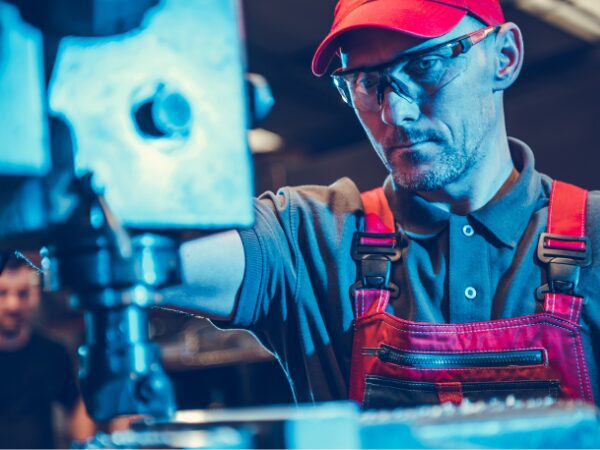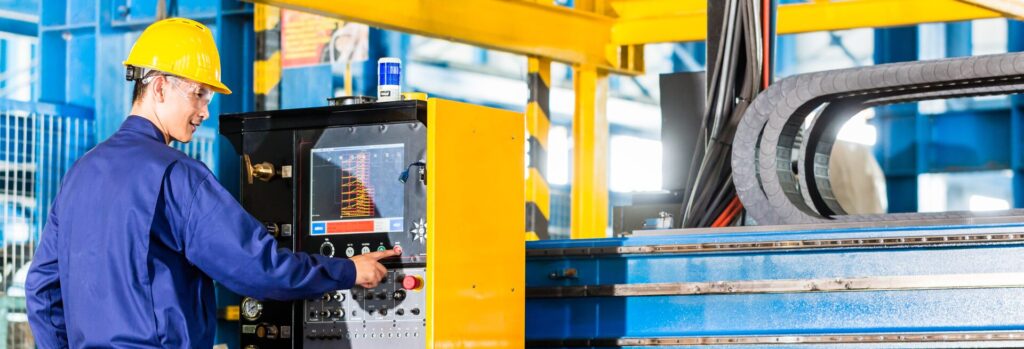Industry 4.0: Digital Transformation in Manufacturing
The Industry 4.0 represents a blend of two industries: information technology and manufacturing. ...

In the evolving landscape of manufacturing, the integration of Information Technology (IT) has given rise to a novel paradigm of collaboration between humans and machines known as Human-Machine Collaboration. This marks a significant advancement in the way manufacturing processes are conceptualized and executed. By leveraging the capabilities of both human expertise and machine precision, IT-enhanced manufacturing environments are fostering innovation, efficiency, and flexibility.
Human-Machine Collaboration revolves around the concept of complementarity. While machines excel in repetitive and precise tasks, human ingenuity shines in complex decision-making, creative problem-solving, and adaptability. The integration of IT acts as the conduit for orchestrating this collaboration seamlessly.
One notable aspect of Human-Machine Collaboration is the advent of collaborative robotics, often referred to as “cobots“. These robots are designed to work alongside human operators, augmenting their capabilities rather than replacing them. Cobots excel in tasks that require consistent precision and heavy lifting, relieving human workers from physically taxing and monotonous activities. This allows human workers to focus on tasks that demand critical thinking, ingenuity, and the finesse that only a human touch can provide.
Augmented Reality (AR) and Virtual Reality (VR) technologies are also transforming the way humans interact with manufacturing processes. By overlaying digital information onto the physical world, AR enhances situational awareness for workers. This is particularly valuable in complex assembly tasks where real-time guidance can reduce errors and enhance efficiency. VR, on the other hand, enables immersive training simulations, allowing workers to practice intricate procedures in a risk-free virtual environment.

The benefits of Human-Machine Collaboration extend beyond the factory floor. Design and prototyping have also been revolutionized by IT integration. Computer-Aided Design (CAD) tools allow designers to create intricate models that are then manufactured with precision by machines. The iterative design process is accelerated, and prototypes can be quickly refined based on real-world testing, leading to faster innovation cycles.
However, the successful implementation of Human-Machine Collaboration is not without its challenges. Ensuring smooth communication and interaction between humans and machines requires intuitive user interfaces and programming. Additionally, addressing potential concerns about job displacement requires a holistic approach. Rather than replacing human workers, machines are often redeployed to tasks that require their specific capabilities, allowing human workers to focus on higher-value tasks.
As Human-Machine Collaboration continues to evolve, the role of humans is transitioning from mere operators to skilled overseers. The need for upskilling and reskilling the workforce is becoming increasingly evident. Workers need to understand how to program, monitor, and troubleshoot the machines they collaborate with. As a result, education and training are key to harnessing the full potential of this collaborative paradigm.
In conclusion, the integration of IT in manufacturing is not just about automating processes; it’s about fostering a symbiotic relationship between humans and machines. Human-Machine Collaboration in IT-enhanced manufacturing environments is a testament to the fact that, rather than being in competition, humans and machines have unique strengths that can be combined to create more agile, efficient, and innovative manufacturing processes. As technology continues to advance, embracing and maximizing the potential of this collaboration will be crucial for manufacturing enterprises seeking to thrive in an era of constant change.
Companies that are innovating in this sector are likely to be eligible for several funding programs including government grants, and SR&ED.
Want to learn about funding opportunities for your project? Schedule a free consultation with one of our experts today!
Explore our latest insights
More arrow_forward
The Industry 4.0 represents a blend of two industries: information technology and manufacturing. ...

Provincial governments are slowly unveiling their provincial budgets outlining fiscal strategies ...

Recently, Canadian representatives attended COP27 to discuss the actionable steps to implement to...

Recent announcements demonstrate that the SR&ED program is now under review. The government w...